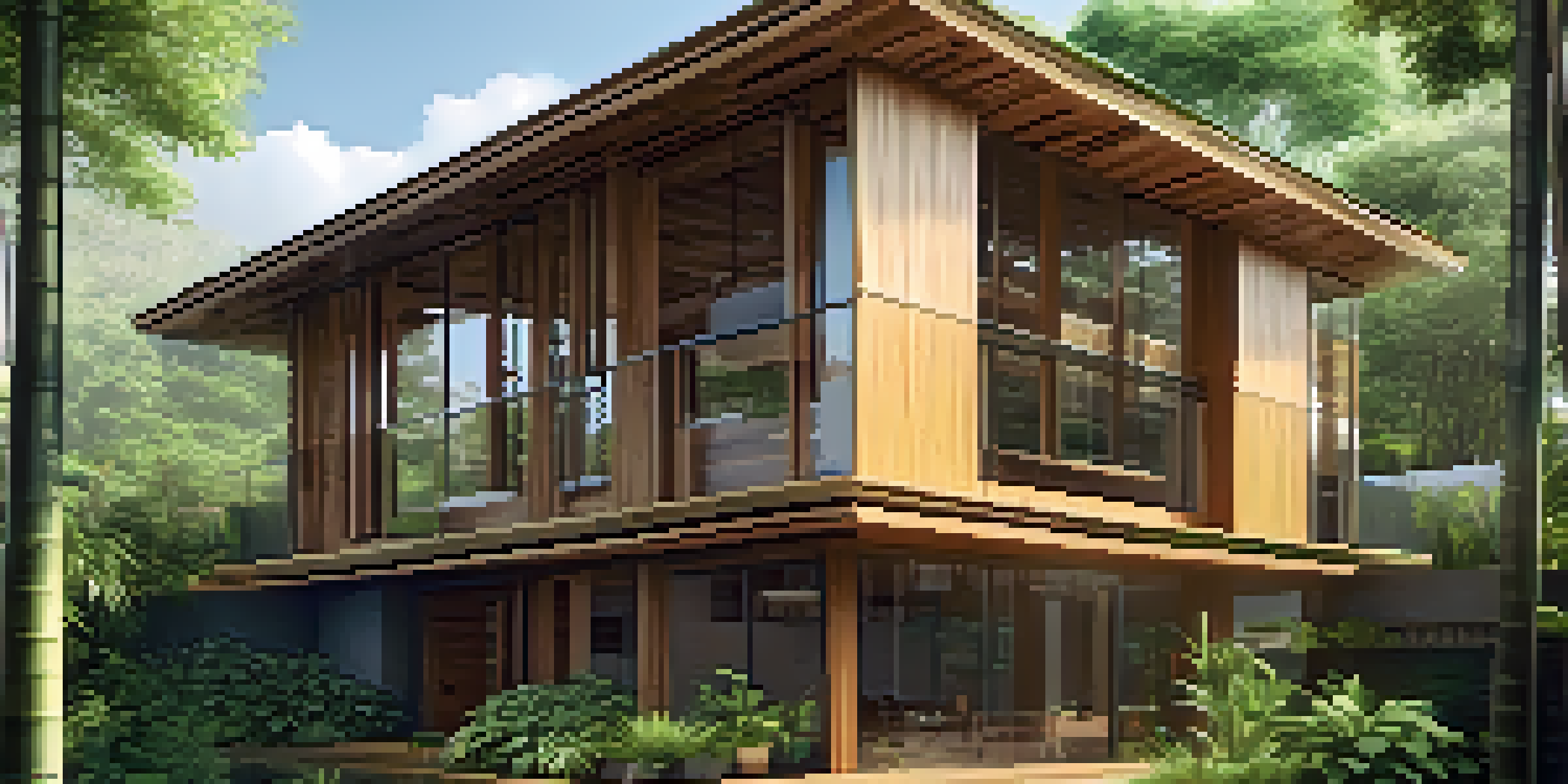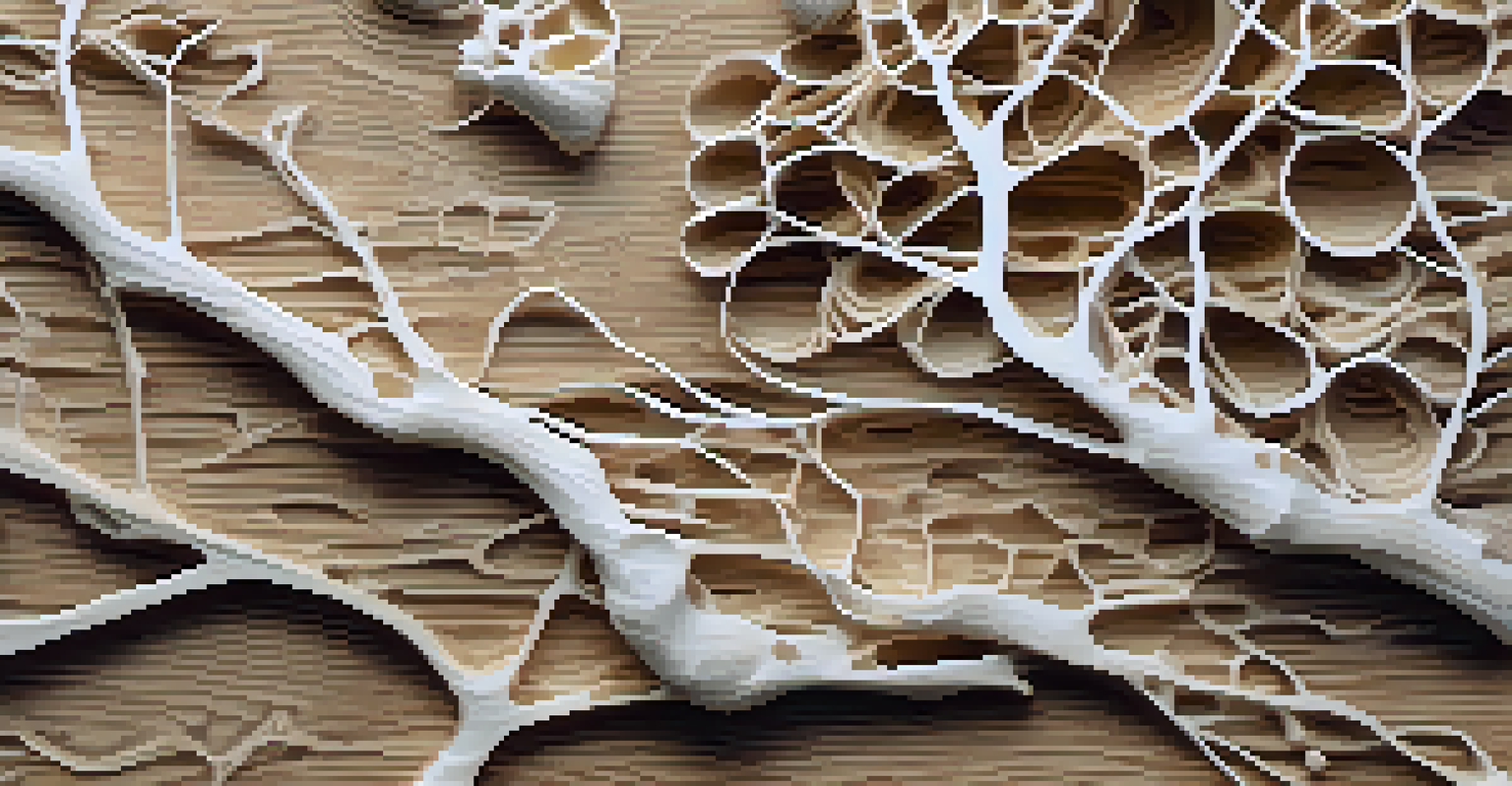Innovative Materials for Sustainable Green Building Designs

The Rise of Sustainable Building Materials
In recent years, the construction industry has seen a dramatic shift towards sustainability. This movement is driven by the urgent need to reduce carbon footprints and promote environmentally friendly practices. Innovative materials are at the forefront of this change, offering solutions that not only meet aesthetic and functional needs but also contribute to a healthier planet.
The greatest threat to our planet is the belief that someone else will save it.
For instance, materials like bamboo and reclaimed wood are gaining popularity due to their low environmental impact and renewability. Bamboo grows rapidly and is incredibly strong, making it an excellent alternative to traditional timber. Reclaimed wood, on the other hand, gives a second life to old structures while adding character and charm to new builds.
As the demand for green buildings grows, architects and builders are increasingly exploring unconventional materials. This not only enhances the sustainability of their projects but also opens up exciting opportunities for creativity in design.
Recycled Materials: A Second Chance for Resources
Recycling is no longer just a buzzword; it's a fundamental aspect of sustainable building practices. Using recycled materials helps divert waste from landfills while conserving natural resources. Materials like recycled steel, glass, and plastic are being repurposed into stunning architectural elements.

For example, recycled steel is not only durable but also reduces energy consumption during production compared to new steel. Similarly, glass from old windows can be transformed into beautiful tiles or countertops, showcasing both creativity and sustainability. This circular approach to materials ensures that resources are utilized wisely and responsibly.
Sustainable Materials Transform Building
Innovative materials like bamboo and reclaimed wood are reshaping the construction industry by promoting sustainability and reducing environmental impact.
By incorporating recycled materials into building designs, developers can significantly lower their environmental impact while creating unique and visually appealing spaces. It’s a win-win that highlights the beauty of sustainability in architecture.
Natural Insulation: Combining Comfort with Ecology
Insulation is a critical component of any building, affecting energy efficiency and comfort. Traditionally, synthetic materials like fiberglass have dominated the market, but natural insulation options are now making waves. Materials such as wool, hemp, and cellulose are not only effective insulators but also environmentally friendly.
Sustainability is no longer about doing less harm. It’s about doing more good.
Natural insulation materials can help regulate temperature and humidity, providing a healthier indoor environment. For instance, sheep wool can absorb moisture, keeping spaces dry and comfortable while also offering excellent thermal performance. Meanwhile, hemp insulation is lightweight and biodegradable, making it an excellent choice for eco-conscious builders.
By opting for natural insulation, builders can ensure that their structures are not only energy-efficient but also promote well-being for occupants. This approach reflects a deeper understanding of the interconnectedness between our buildings and the environment.
Smart Materials: Technology Meets Sustainability
The integration of smart technology into building materials is revolutionizing the construction industry. Smart materials can adapt to their environment, enhancing energy efficiency and user comfort. For instance, phase-change materials can absorb and release thermal energy, helping to regulate indoor temperatures effectively.
Another exciting example is self-healing concrete, which can repair its own cracks when exposed to moisture. This innovation not only extends the lifespan of structures but also reduces the need for repairs, ultimately saving resources and energy. Such advancements demonstrate how technology is being harnessed to create more sustainable building practices.
Recycling Shapes Eco-Friendly Design
Incorporating recycled materials such as steel and glass helps minimize waste and creates unique, visually appealing architectural elements.
Smart materials represent a promising frontier in sustainable design, merging functionality with environmental responsibility. As technology continues to evolve, we can expect even more innovative solutions that will shape the future of green buildings.
Biodegradable Materials: Embracing Nature's Cycle
Biodegradable materials are gaining traction in the realm of sustainable building, offering a way to reduce waste without compromising quality. These materials break down naturally over time, returning nutrients to the earth, which aligns perfectly with the principles of sustainability. Examples include mycelium, made from mushroom roots, and bio-based composites derived from natural fibers.
Mycelium can be grown into custom shapes, making it a versatile option for insulation and packaging. Meanwhile, bio-composites can replace traditional plastics in construction, significantly lowering environmental impact. This approach encourages a more harmonious relationship with nature, rather than one of exploitation.
By choosing biodegradable materials, builders can contribute to a more sustainable future, ensuring that their structures do not leave a lasting negative imprint on the planet. It’s a step towards a circular economy where waste is minimized and resources are cherished.
Innovative Finishes: Enhancing Aesthetics Sustainably
Sustainable building materials don’t just stop at structural elements; innovative finishes are transforming the look and feel of green buildings. Eco-friendly paints, stains, and coatings are now available, made from natural ingredients that are less harmful to the environment. These finishes can provide the same aesthetic appeal as traditional options without the toxic chemicals.
For example, milk paint, made from casein, is a non-toxic alternative that not only looks beautiful but also supports indoor air quality. Similarly, finishes derived from plant oils are gaining popularity for their durability and low environmental impact. This shift allows designers to create stunning interiors while making responsible choices.
Future Innovations in Green Materials
The construction industry's future lies in developing new materials that prioritize sustainability, cost-effectiveness, and creative design solutions.
Incorporating sustainable finishes into building designs is a powerful way to enhance aesthetics while remaining committed to eco-friendly practices. It demonstrates that sustainability can be stylish and appealing, inviting more people to embrace green living.
The Future of Sustainable Green Building Materials
As we look towards the future, the potential for innovative materials in sustainable building is vast. The construction industry is continuously evolving, driven by technological advancements and a growing awareness of environmental issues. This evolution is leading to the development of new materials that are not only sustainable but also cost-effective.
For instance, researchers are exploring bioengineered materials that can capture carbon or purify air, pushing the boundaries of what’s possible in construction. Additionally, collaborations between architects, engineers, and material scientists are fostering a culture of innovation that prioritizes sustainability at every stage of the building process.

Ultimately, the future of sustainable building materials lies in our ability to think creatively and embrace new ideas. As more builders and designers choose to prioritize sustainability, we can look forward to a built environment that respects and enhances the natural world.